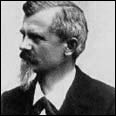|
The new brand name bestowed by Emil Jellinek on the products of the Daimler Motoren Gesellschaft performed exceptionally well in the racing events at Nice early in 1901. Thus racing helped put 'Mercedes' on the map. Other great racing success in the years leading up to the first World War confirmed the quality, speed and distinction of the Mercedes, made by Daimler.
Down the years, the way the press and historians have regarded Mercedes and subsequently Mercedes-Benz has played an important part in establishing the reputation of the company and its products. From his Ludvigsen Library, Karl Ludvigsen has extracted some quotes, all significant in this respect. They are roughly in the order of the events on which they are commenting
"The 35-hp Mercedes swept the board [in 1901], winning the new LaTurbie 15-kilometer hill climb, the race over the Esterel mountains, and the flying and the standing mile on the Promenade des Anglais. Well might Auto Velo describe these events as an 'historic achievement'. After the racing was over, Werner's winning car was fitted with a comfortable body and was driven quietly about Nice - a master stroke of salesmanship. Back at Cannstatt, Maybach said, 'This is a triumphant conclusion to four years' intensive work.' And so it was."
- 'Three-Pointed Star' by David Scott-Moncrieff
"The new car won the famous Nice-LaTurbie hill climb in 1901, and from that time to the present day the firm has displayed a most commendable and encouraging outlook toward motoring competitions. The cars themselves have always been of first-class quality, workmanship and design; and consequently they have never been cheap."
- 'Sports Cars in Action' by John R Bond
[At the end of 1908] "During the next few years, firms whose reputation had been built on racing learned, as they should have from their earliest attempts to do so, that it does not pay to stop racing. Mercedes lost so many sales that they had to discharge men."
- 'Veteran and Edwardian Motor Cars' by David Scott-Moncrieff
"There is no doubt whatever that when Mercedes make one of their periodical returns to racing, there are no half measures. No money or pains were spared on their 1913 racing cars. Various engines were installed in chain-driven chassis with a view to trying them out under actual racing conditions."
- 'Veteran and Edwardian Motor Cars' by David Scott-Moncrieff
"From the Nice Motor Week of 1901 this firm never looked back, but one thing is manifest from their records. Whenever they ceased to race officially, as a firm, their sales and profits declined in no uncertain manner. Their highlights as far as racing and prestige were concerned were victories in the 1903 Gordon Bennett, the 1908 Grand Prix at Dieppe, and, of course, the dramatic line-ahead win in the 1914 French Grand Prix."
- 'Veteran and Edwardian Motor Cars' by David Scott-Moncrieff
"'Life is movement and movement is a struggle' - under this motto as the work of the Daimler-Benz AG and the firms of its origin worked from the very first. Only in battle is it clearly and unambiguously evident whether the chosen way is correct and whether one's desire and ability against another not only holds fast but also always shows itself as superior. The leading men of the Daimler, Benz and Daimler-Benz works have accordingly from the very beginning viewed it as their foremost duty to validate the performance of their products in hard sporting competition again and again in the public eye."
- 'The Racing History of Daimler-Benz AG and its Companies of Origin 1894-1939' by Daimler-Benz AG
"The Germans of 1937 overwhelmed us, turned our knees to jelly, and stunned our brains with the earthshaking crash and scream of their exhausts, their unbelievable speed. Their organisation and pit work were beyond our imagination. They took the temperature of the track and of their tyres. They carried beautifully fitted cases containing hundreds of different-sized carburettor jets. Other fancy fitted boxes contained spark plugs of every conceivable heat range. They measured barometric pressure. This display of technical proficiency apparently was intended to make us wonder how anyone could beat such Supermen in a war."
- 'The Treasury of the Automobile' by Ralph Stein
[1951] "To Haspel, as to Kissel before him, racing had a single purpose: publicity. Now that his company was back on its feet in Germany and the 300 was proving the war had not dimmed the lustre of the Mercedes image around the world, racing was a new priority. 'That's what he said,' Uhlenhaut remembered. 'He didn't say what. He just said we should do something on the competition side.'"
- 'The Star and the Laurel' by Beverley Rae Kimes
"Mercedes-Benz came back. Although the Germans had been personae non grata in Grand Prix for a few years after the war, they could have entered GP racing for several years prior to 1954. But Mercedes-Benz never races unless it has an almost certain chance of winning."
- 'The Treasury of the Automobile' by Ralph Stein
"In August 1954 in an interview with the motoring journalist Rainer Gunzler [Dr Fritz] Konecke said, 'Bearing in mind the great national and international interest in motor racing events and the strength of foreign competition, a successful racing team can influence the overseas image of the victorious marque to a huge extent. This promotes the reputation of all German quality products abroad and thus aids Germany's overall export economy.'"
- 'Mercedes-Benz W196 - Last of the Silver Arrows' by Michael Riedner
|









